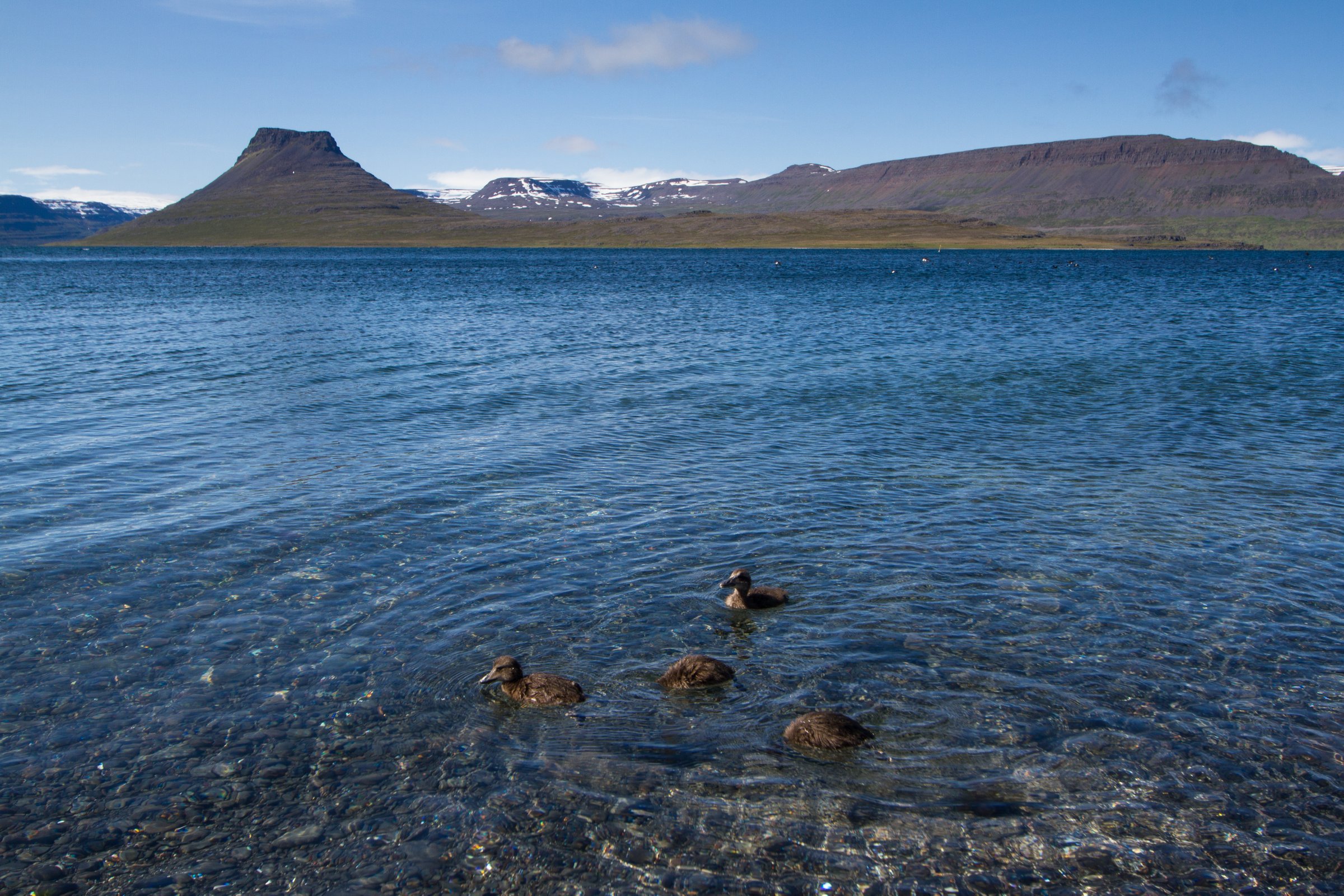Eider Ducks and the Westfjords: A Unique Connection
The Legal Protection of Eider Ducks
The eider duck (Somateria mollissima) has been protected in Iceland since 1847, and strict laws regulate the interaction between humans and these birds. According to Regulation 52/1996, access to nesting areas is restricted during the nesting season, which runs from April 15 to July 14. This regulation aims to minimize disturbances that could cause the birds to abandon their nests. During this period, it is illegal to approach nesting sites without explicit permission from local authorities or landowners.
 Eiderdown: A Valuable Natural Resource
Eiderdown: A Valuable Natural Resource
Eiderdown is the soft down that female eiders pluck from their breasts to line their nests. After the nesting season ends, farmers collect the down from abandoned nests, making sure not to disturb the birds. This down is highly prized for its insulating properties and is used in luxury bedding and clothing.Iceland produces around 75-80% of the world’s eiderdown, with the Westfjords contributing significantly due to their vast and suitable coastline Harvesting eiderdown is a sustainable practice that benefits both the farmers and the birds, as the farmers actively protect the eider ducks from predators.
The Importance of Not Disturbing Eider Ducks
It is important for travelers to understand that disturbing eider ducks during the nesting period can have serious consequences for the birds and the local economy. Eider farmers rely on the birds returning to the same nesting sites each year, and any disturbances can cause the ducks to abandon the area. To ensure the continued health of the eider population and the quality of the down collected, visitors should avoid entering restricted areas during the nesting season.
The Westfjords: A Haven for Seabirds
While the eider duck is a key species in the Westfjords, the region is also home to a wide variety of seabirds. The steep cliffs and remote islands provide nesting sites for puffins, guillemots, and the Icelandic eagle. Birdwatchers visiting the Westfjords during the summer months can witness a diverse range of seabird species, making the region an attractive destination for nature enthusiasts(
 Eiderdown Harvesting: A Tradition in the Westfjords
Eiderdown Harvesting: A Tradition in the WestfjordsThe process of eiderdown collection is not only environmentally sustainable but also steeped in tradition. For centuries, farmers in the Westfjords have patrolled the nesting sites during the breeding season, protecting the birds from predators such as foxes and minks. In return, the birds continue to nest in these safe areas, allowing farmers to collect down after the birds have left. This sustainable practice ensures that the eider population remains stable while providing a valuable resource for the local economy(
Conclusion: Respecting Nature in the Westfjords
As you explore the Westfjords, it’s important to recognize the delicate balance between human activity and the natural world. The eider duck, along with the other seabirds that call this region home, is a vital part of the local ecosystem. By respecting the rules around nesting areas and appreciating the traditions of sustainable farming, visitors can help preserve this unique relationship

